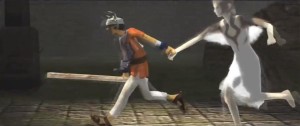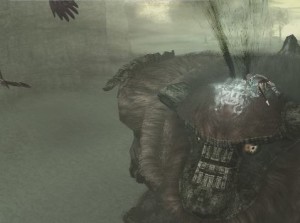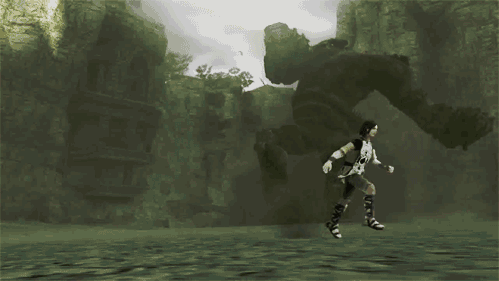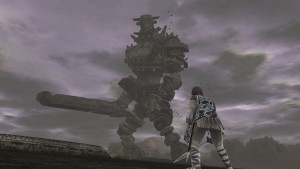Do you remember that day you received your first video game console? How about that time you discovered a secret stage that none of your friends knew about? Being so excited for the latest iteration in a long-running series, only to be disappointed or have your expectations exceeded beyond your wildest dreams. That is what the Video Gamer’s Experience is all about.
By 2005, the dawning of a new era in gaming was approaching. Microsoft, who a few years earlier entered the console video gaming world, was preparing to release its second piece of video game console hardware – the “Xbox 360”. Nintendo looked to shock the world with a new console system dubbed “Revolution” that would feature a remote control-like controller and ask potential players to interact with games by actually moving more parts of their bodies other than just their thumbs and fingers. And Sony, the big kahuna of video gaming, had its eyes set on changing the way high definition media was stored and played back with “Blu-Ray” discs – something they hoped to utilize with their next iteration of the “Playstation”. But gamers were still happy to play what had carried them into the new millennium and beyond.
Four years prior to the eventual big three making their intentions known about what was in store for the future of gaming, players joined together and talked about greatness systems like the “Playstation 2” and Sega’s “Dreamcast” offered. On the Sony front, one particular game stood out from the pack of hundreds thanks to its fantastic art design, challenging puzzles and interesting story, “Ico”. Headed by Fumito Ueda, Team Ico looked to create an experience not unlike a popular independent movie that garners a ton of praise by those who have experienced it, and is eventually given the marketing and widespread availability of a “Triple A” title. I would keep hearing about “Ico’s” quality and must-play ability for the next year or two; even seeing the game on a shelf at “Gamestop” and being tempted to purchase it, but telling myself instead, “I’ll get it one day.” That day never came during the “PS2’s” time as my active, go-to console.
But times had changed in 2005 and my mind was ready to accept greatness. That year while everyone was looking toward the future, many gamers who had played and admired “Ico” from afar respectively were excited to hear about the North American release of the game’s spiritual successor, “Shadow of the Colossus”. Though graphically the game would be very reminiscent of its predecessor, the gameplay promised to offer a completely different experience that would still be emotionally taxing and gripping. Christmas 2005 saw me becoming the owner of Team Ico’s latest work and I was ready to see what I had been missing from this great studio for the past four years.
Did I Complete “Shadow of the Colossus”
Unlike “Ico”, “Shadow of the Colossus” (or “SotC”) doesn’t feature minor enemies. As promoted time and time again before its release, the game is a series of boss battles – one more spectacular than the last. It was an interesting experiment that, depending on the studio, could produce something worth playing or become a frustrating piece of software that should be avoided and panned by all who played it. Thankfully, Team Ico was the prior. Following the opening scenes featuring a lone boy and his horse riding toward a castle standing out between the peaks of mountaintops, the player is taken into the temple. Inside, he lays down a large sheet holding the body of a deceased female. Crying to the heavens, he gets his answers as to how her life could be restored: by going throughout the land and slaughtering sixteen different beasts.
From that moment, the player is given the chance to control an individual (“Wander”) who will only say the name of his horse (“Agro”) so he can venture forth and complete a task seemingly insurmountable. The reason one would think the duty of defeating a gigantic foe in this game is almost impossible is simply due to scale. The enemies placed before the player are so enormous that one would have to question how the creators came up with such a scale. But the magnificence is the beasts can be toppled by creative ways of climbing using the monsters’ fur or the environment (or both) before finding that sweet spot(s) to stab until each colossus finally tumbles in death.
Upon scaling (or leaping onto) fifteen colossi in a row, I approached the final enemy. This living tower of lightning bolts, clawing hand swipes and stab spots aplenty proved to be a formidable foe that took quite a while for me to defeat, as the path to each vulnerability is a puzzle in and of itself. An hour or so after starting my climb of Colossus 16, I was given the privilege of relishing in victory (only to see the ending and feel totally different).
Yet there is actually more to “SotC” than just the initial play through. After going through the game, the player is given an opportunity to play the game on an overall harder difficulty and even test his/her skills through “time attack” mode where the player has to beat the clock when slaughtering adversaries in hopes of attaining prizes (both useful and odes to its predecessor). For yours truly, the lone experience of conquering the unconquerable was enough on the “Playstation 2”. But that didn’t stop me from giving it another go when I purchased my “Playstation 3” to topple the beasts one more time.
Did “Shadow of the Colossus” Live Up to the Hype?
Like “Ico” before it, “SotC” has become one of the poster boys for “Video Games Are Art” argument that has going on for quite some time. One cannot talk about “Shadow” without first mentioning how gorgeous it is both visually and aurally. The game, while minimalist in nature when it comes to the environment and color scheme, perfectly creates an atmosphere rarely seen in video games where one feels isolated in the world, but can’t help but be mesmerized by the simple beauty of lush foliage, clear water streams flowing from a mountain not far from Wander’s position, and the crumbling architecture of a land seemingly long since abandoned by man. All while this (be it a tremendous battle or during a simple walk around the castle your character is temporarily calling home) is going on, the masterful hands and ears of Kow Otani are in full display thanks to a haunting, yet gorgeous soundtrack that seeps in and out of the scene almost whimsically. The story is so similar to its artistic counterparts in being simple, yet profound – writing more than what has already been explained would spoil some vital parts.
But all the pretty visuals and sounds in the world can’t make a game something incredible if the gameplay isn’t there. As noted above, the singular focus of “SotC” is to figure out the living puzzle of each beast and slay it in spectacular fashion. The way to complete the task is, mostly, entirely up to the player. Thanks to this piece of gaming freedom, players are given the chance to experiment and test the boundaries of what should’ve and could’ve been a very limiting experience. Very few colossi feel insignificant and not worthy of the game (though a few come across as misplaced as they could’ve worked better earlier or later in the game depending on what monsters you’re referring to).
But “Shadow of the Colossus” isn’t perfect. While some have stated the game’s objective can become repetitive, the fact is each colossus poses a different difficulty and experience. The biggest “gameplay” problem is the journey from the castle to the site of the next gigantic enemy. There are times later in the game when the player has to go all the way across the land with only the help of a sword’s reflection to be Wander’s guiding light. With mountains and valleys surrounding Wander, there are times when that light leads the player astray and Wander is stuck wandering around trying to find that lost path. And even if a person does stay on course, the trek can become tiring and rather boring.
The game’s other flaw comes from a technical perspective. “Shadow” pushed the very limits of what a PS2 game could do in 2005, causing the game to chug along at times in the middle of a heated battle. While the HD upgrade has mostly eliminated that problem, the issue of textual pop ups still arises. Another technical problem has to be the control scheme. Though released in 2005, “SotC” plays similarly to “Ico”. Both games take some getting used to, with the prior featuring a true need for dexterity both in the mind and fingers that might turn off some gamers when they can’t properly time the “lock on/lock off” feature.
Should You Play “Shadow of the Colossus”
“Shadow of the Colossus” is one of the most beautiful (both aesthetically and aurally) experiences a gamer could have. But from a gameplay perspective, it might not be the type of experience someone would want to have thanks to the down time traveling across the virtual land and performing the same routine, only against a different enemy. But it’s so hard not to tell someone to try the game and attempt to slay a couple of colossi to see if it’s worth continuing because there’s a great chance you’ll get sucked into the world and the enormous duty thrust upon a nearly muted individual with a very bombastic soul. While you can easily find the PS2 version of the game, it is highly recommended you pick up the “Ico & Shadow of the Colossus Collection” for PS3 to get the full experience of two legendary games that the Playstation 2 had a hard time handling technically.










